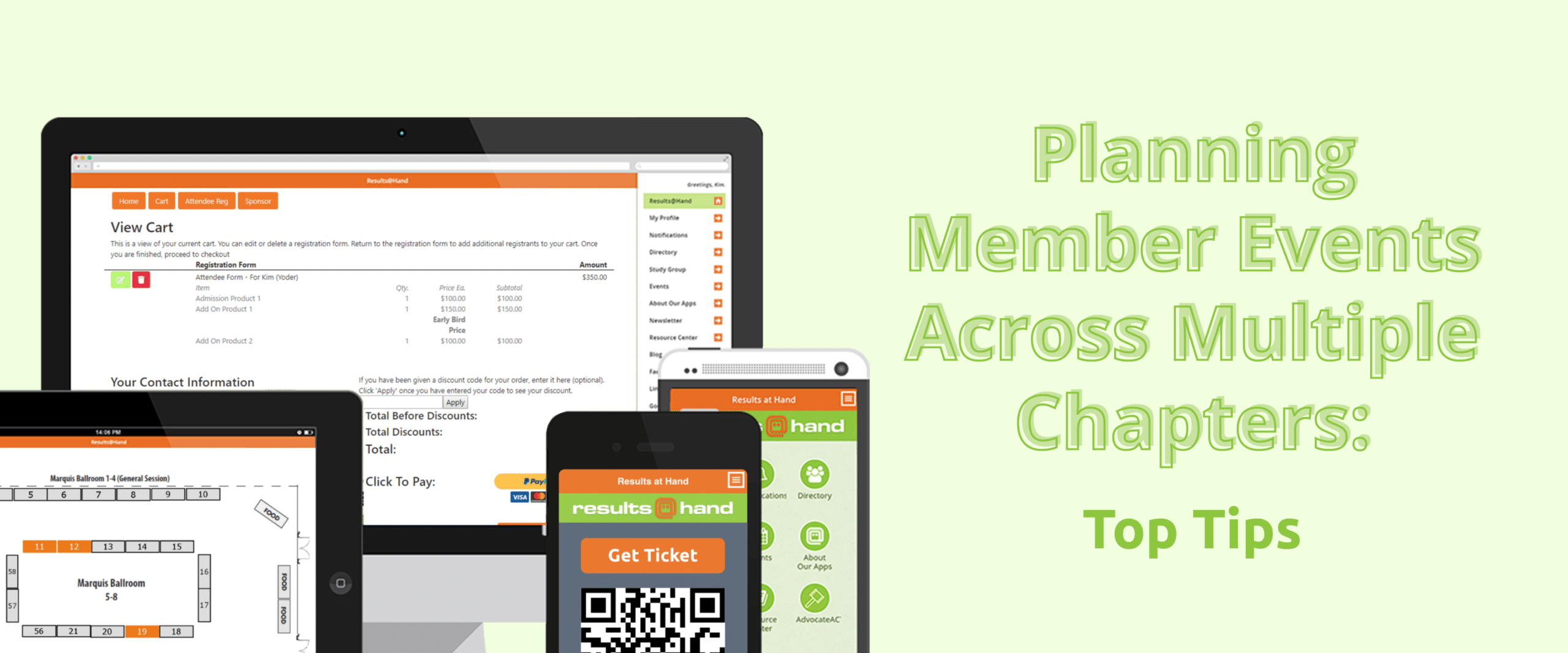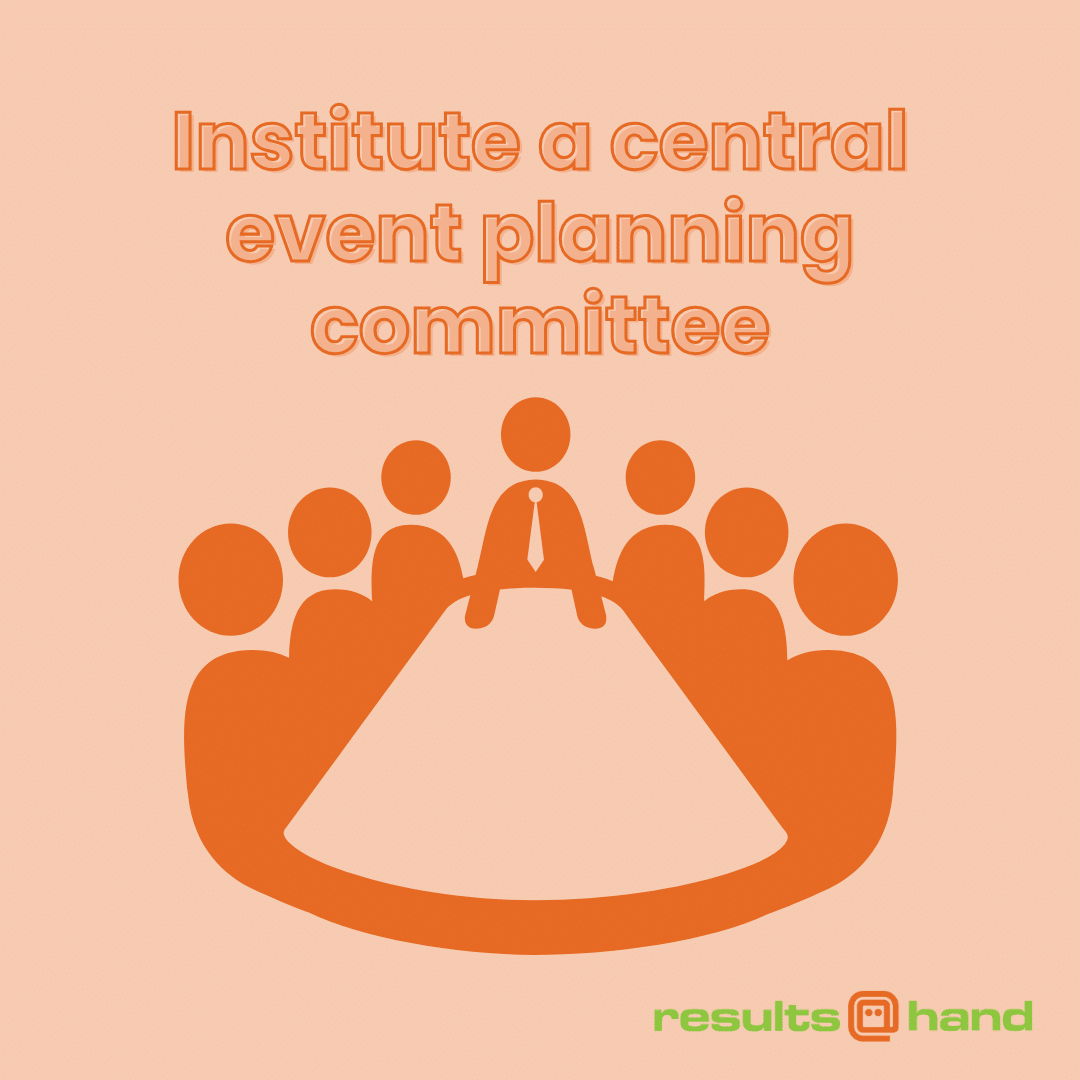Planning Members Events Across Multiple Chapters: 3 Top Tips

Whether you’re raising money for a philanthropic partner, recruiting new members, or even hosting an alumni engagement event, your member-based organization’s schedule is full of activities and events. These events all serve distinct, crucial purposes.
Now, imagine if you could boost your attendance and engagement by multiple factors. Throwing multi-chapter events allows you to do just that!
Not only do multi-chapter events allow you to harness power in numbers, but you can also build relationships between members, encouraging them to renew in the future.
But making your event successful requires much more than a mass email invite and a large venue. In this guide, we’ll review how to organize your team and use your software to plan and execute an influential cross-chapter event.
 1. Institute a central event planning committee.
1. Institute a central event planning committee.
While all of your chapters exist to serve your overarching purpose, they all have unique goals, strengths, and resources. For instance, let’s say you’re overseeing a fraternity managing a GivingTuesday campaign across multiple campuses. Some campuses might have enough funds to host a full in-person fundraising event, whereas others are better equipped to host virtual events.
Form a central event planning committee with members from all chapters to ensure everyone is on the same page. This committee will be responsible for tasks like:
- Brainstorming ideas for the event.
- Setting goals and key performance indicators.
- Standardizing data collection, database management, and reporting.
- Communicating with organization-wide management and members.
- Creating subcommittees, like marketing, event web page design, and day-of logistics.
- Monitoring progress and sharing updates.
- Allocating budgets and determining billing details.
Remember, for this committee to be successful, you’ll need to train your members in committee protocol and event planning essentials. If members want to help but don’t have the time or experience to participate in this group, consider putting them on a lower-stakes subcommittee that aligns with their interests and skills.
2. Set big-picture goals and metrics.
Once you’ve formed your committee, lay the event’s foundation by establishing goals and objectives. Keep these tips in mind to unify your efforts before you get started:
- Understand the difference between goals and objectives. Goals are overarching desired results and objectives are more minor activities that contribute to goals. An example goal for a multi-chapter event might be to raise $10,000 on GivingTuesday, whereas an objective might be to recruit 50 volunteers a month before event day.
- Develop a communal budget. While each chapter will determine its own budget, set an overall spending benchmark for the organization. Then, have individual chapter leaders submit their own budgets and receipts, adjusting as necessary to accommodate any unexpected circumstances.
- Prepare a contingency plan. Planning for unforeseen circumstances mitigates negative impacts if worst-case scenarios occur. Your plan should include a risk assessment, alternative arrangements, and a communication strategy to prevent chaos.
- Set key success metrics. For instance, your organization might use total dollars raised as a metric for a fundraising campaign, whereas for an alumni engagement event, you might track attendance and participant satisfaction. Metrics should be consistent across chapters, even if specific benchmarks vary.
Given your different chapters’ nuances, allow for flexibility while determining these goals, objectives, metrics, and benchmarks. Touch base with representatives from every chapter to ensure everyone’s specific needs are taken into account.
3. Facilitate open communication across chapters. 
Whether you represent a union or a fraternity, all member-based organizations rely on communication to remain unified and connected. This is even more crucial on a multi-chapter scale, in which you likely won’t see other chapter members on a regular basis.
However, simply sending an email offhand isn’t enough to forge a strong communication strategy. To do so, you need the right infrastructure for members to contact each other efficiently and effectively. You can launch multi-chapter communication cadences by:
- Setting expectations. Standardizing communication expectations ensures everyone stays informed in case of unforeseen circumstances. For instance, you might have a policy that dictates members must let you know at least 24 hours in advance if they’re going to miss a committee meeting.
- Choosing effective communication channels. Sending a message is one thing, but ensuring it’s delivered and read is another. Pick communication channels your members are likely to check regularly, whether that’s email, text, social media, your organization’s year-round event app, or your community engagement software. That way, everyone can easily tune into messages.
- Communicating consistently. Adhering to a communication schedule keeps your team organized and provides your members with peace of mind leading up to your event. Let’s say you send a weekly update email to your members leading up to your event. Each week, draft the email and schedule-send it in advance so you (and your members) never miss a beat.
- Collecting anonymous feedback. Your members might have feedback or other concerns they don’t want their names attached to. Establish an anonymous feedback survey that doesn’t require an email to fill out so your members feel comfortable and listened to. Members can leave their anonymous feedback in their year-round event app.
- Make contact information publicly available. Ask members (especially those on the event planning committee) to share their emails and phone numbers in case anyone has specific concerns. Make this information publicly available within your organization’s app. However, don’t share any personal information without consent, and tell members exactly what their information will be used for before they submit it.
Remember that effective communication is all about speaking and listening. Ensure your communication channels are two-way, allowing members to message you with any questions or comments.
Once you’ve laid your event’s foundation, it’s time to mobilize your members! Regardless of the event’s focus, highlight the benefits of participating on your blog, in your chapter meetings, and in casual conversation. By throwing a multi-chapter event (and using these tips), you can access your organization’s full potential and bring your entire community closer together.
